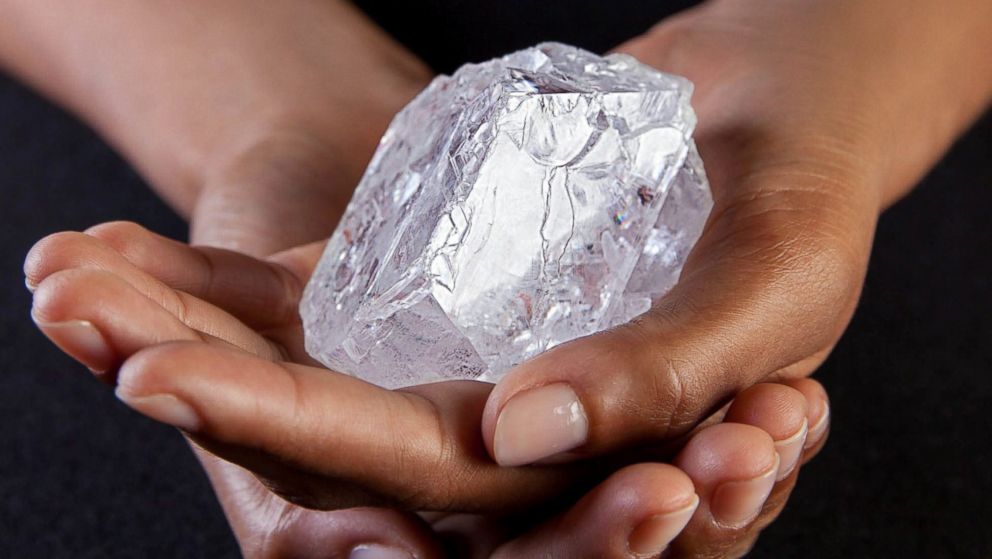
Diseases are contracted by the people, and plants and animals do not survive because their habitats are destroyed. The destruction of this area has led to land, water, and air pollution. It produced 2.1 Mct of diamonds last 2017 and has a total diamond resource of 45 Mct. The Finsch diamond mine is a classic diamondiferous kimberlite pipe and has a surface expression of 17.9 ha (hectares). The underground development started in 1978, and in 1982, the shaft was commissioned. The crater made to extract diamonds is 1,750 feet wide and has a depth of over 1,000 feet. This is the second largest diamond production in South Africa. and managed by DeBeers Consolidated Mines (DBCM). This diamond mine is owned by Petra Diamonds Pty Ltd. The Finsch diamond mine is located near Kimberley in South Africa. Pollution has caused the deaths of plants and animals, and land degradation has made some areas unsuitable for farming. The stagnant water from open pits has causes diseases not only to the workers, but also to the people living near the areas. The diamond mining in Catoca has ruined the ecosystems in this area. It was even planned to increase the depth of these open pit mines to 2,000 feet in the future. The open pit mines they made can even hold up to 130 Mct of diamonds and currently have a depth of 650 feet. It is estimated that this diamond mine houses around 60 Mct (million carats) of diamonds as reserves. The approximate ratio to form one carat of diamonds is one metric ton of rocks. The open pit mine is owned and operated by Sociedade Mineira de Catoca, and is a joint venture between the companies Endiama, Alrosa, China Sonagol, and Odebrecht Mining. The Catoca diamond mine is located in the Lunda Sul province of Angola and is the fifth largest diamond mine in the world. These are the Catoca diamond mine, Finsch diamond mine, Jwaneng diamond mine, Koidu diamond mine, and the Udachny diamond mine. We have included five diamond mines in different countries to show the negative impact it has brought on the environment, the diamond workers, and the people living in the communities around these areas. When these mining pits are filled with stagnant water, it can be a breeding place for mosquitoes and can cause diseases like malaria and dengue. Polluted bodies of water can destroy the aquatic plants and animals living there and other animals whose main diet consists of fishes. These dust particles are often made up toxic chemicals which can also lead to diseases. Another effect of soil erosion is deforestation which can have huge effects on the ecological systems.Īirborne dust pollution can be attributed to soil erosion as well. Land degradation can make a particular place more prone to flooding and other calamities. Some areas might not be suitable for farming anymore. Improper diamond mining practices can contribute to soil erosion, and may result to agricultural problems since the nutrient from the upper soil are removed. These activities can endanger the environment. Unfortunately, most diamond mining companies do not bother to implement these regulations. It is also easier to reduce the negative effects of diamond mining if proper planning and regulations are implemented by the mining companies. It is true that diamond mining is less harmful than mining for gold and other precious metals because less toxic chemicals are used. NEGATIVE EFFECTS OF DIAMOND MINING ON THE ENVIRONMENT Usually, these diamonds will be mounted on jewelry too. The rough diamonds will be sold, cut, and polished afterwards. These diamonds will be categorized based on the carat weight, diamond grading, and other factors. These diamonds will be sieved to produce gem quality rough diamonds. The ore will be processed and the extraction of rough diamonds will take place. Huge amounts of soil will be extracted and brought to the special plants. Shanks are inserted onto the ground when the ore-bearing pipes are found. In this method, secondary deposits are used to trace the primary sources of pipe deposits.
Almazy anaba diamond mine manual#
The process takes longer because of the use of manual labor and low-tech mining equipment.Īnother type of diamond mining is the diamond pipe mining. This method is almost the same as alluvial diamond mining except that there is a straining of mud. There is a form of alluvial diamond mining called the artisanal diamond mining. Bulldozers are used to dig through the grounds of riverbanks once the water is removed from the rivers. In this method, walls are built to divert the flow of water in the rivers.

This type of diamond mining takes place in riverbanks, beaches, and other secondary deposits of diamonds. One way of mining diamonds is through alluvial diamond mining. Types of Diamond Mining Alluvial Diamond Mining


 0 kommentar(er)
0 kommentar(er)
